Top Photo: Immature plumaged hooded mergansers lingering in wetlands.
I’ve been negligent in my duties and haven’t been reporting as often as I’d like to on the goings on in Explore the Wild and Catch the Wind. So much is happening, as it does every spring, that it’s tough to keep up.
Here’s just a couple of handfuls of things that we’ve seen in the Wild over the past few weeks (not necessarily in chronological order).
During the first week of April, American toads were calling out, their high-pitched trill loudly echoing through the Wetlands. It was mating season.
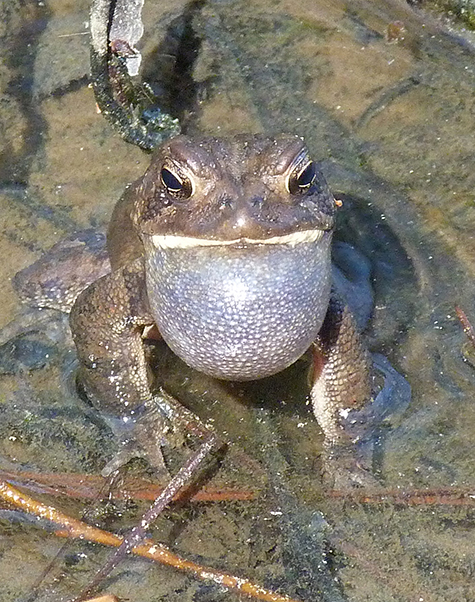
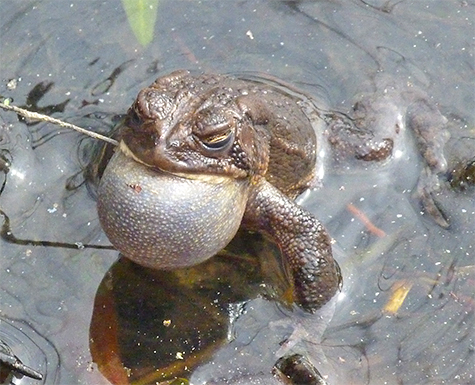
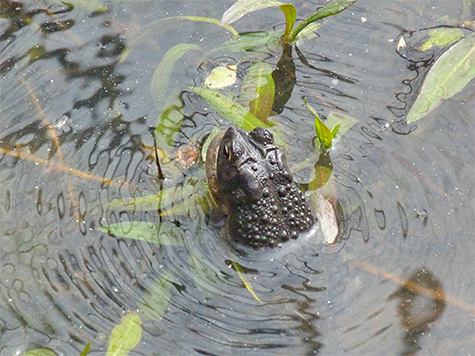
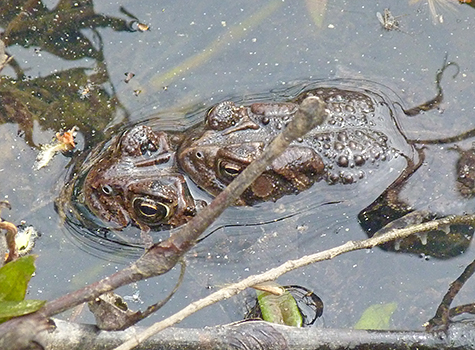
There have been from two to three hooded mergansers in the Wetlands for some time. The latest that I’ve recorded these diving ducks in our Wetlands is 10 April. As I write this, it’s the 15th of April and I’ve seen five of them at a time out on the water.
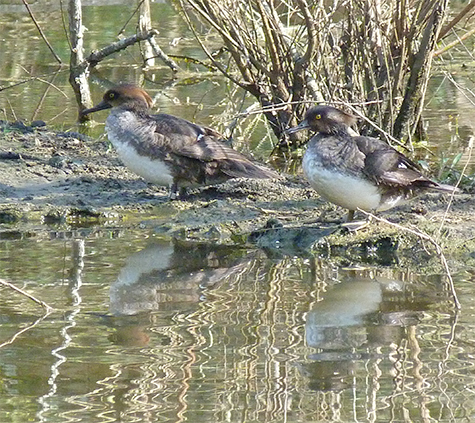
The reason these ducks are still here is that they are not breeding. They are probably all young birds, hatched last summer, so there’s no reason to rush off to some far off breeding grounds. They can stay here and practice being ducks.
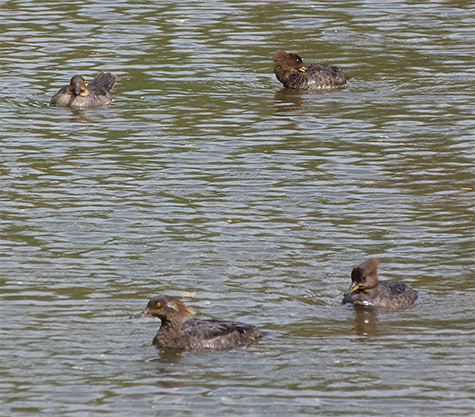
The two birds on the left are young males (light-colored eyes and all dark bills). Also, note the light-colored area behind the eye on the bird at front center. That light spot is where the adult males show all white feathers.
The two birds on the right are females. I’m not sure of their age but I assume they’re young birds since they’re still with us.
The reason I mention the sex differences will become apparent below.
So, there are males and females present. If you’ve followed this blog in the past you may have read about the mergansers that arrive here in November, begin their pair bonding displays upon arrival, and continue throughout the winter. Occasionally, though, I witness a copulation display. Here, the male sharply moves his head from side to side, changes course, swims this way, then that, dips in the water, rears up and flaps his wings. All this while the female sits prostrate in the water. If she accepts his display, they mate. They then both swim off, wash and preen, and life goes on.
One day last week, I witnessed two of the young males practicing the copulation display with each other. They didn’t consummate the affair, but they went through all of the other steps.
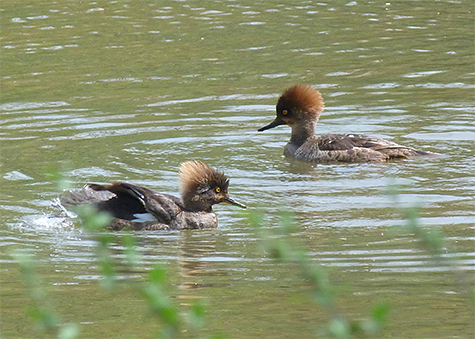
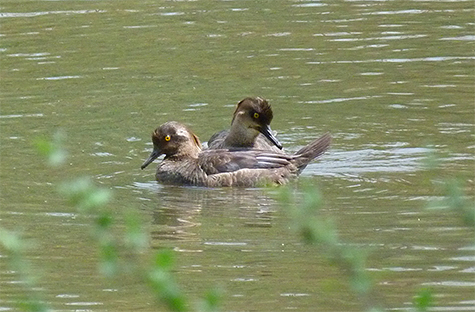
Interesting behavior, don’t you think?
I’ve noted previously that dragonflies are late, or absent, so far this spring. The warm weather of the past few weeks have brought odes out in force. Some species that I thought I would see are still absent, but I have seen fragile forktail, common whitetail, common baskettail, Carolina saddlebags, and both common green and swamp darners.
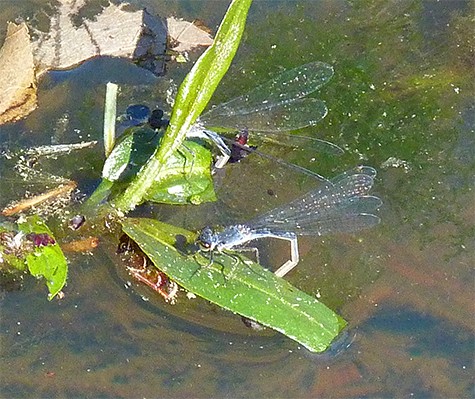
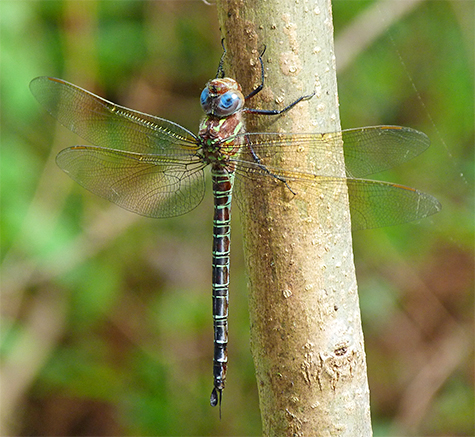
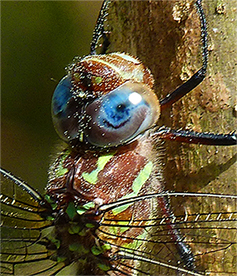
Butterflies have become apparent. The viburnum in front of the Bungee Jump is a good place to see juniper hairstreaks at this time of year.
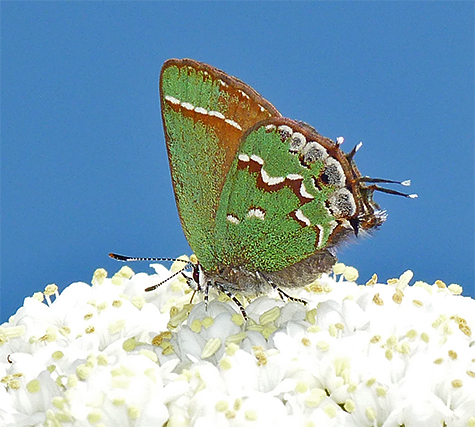
Spring rain kick-starts the cedar-apple rust cycle. This fungal disease goes from cedar tree to apple, or in our case here at the Museum, serviceberry trees. Starting off in spring in galls on the red cedar, large orange tentacle-like structures deliver the fungal spores into the air where it may or may not contact an apple (serviceberry) tree. There, it forms a rust on the leaves and fruit of the tree, ruining the fruit for both we humans and the birds.
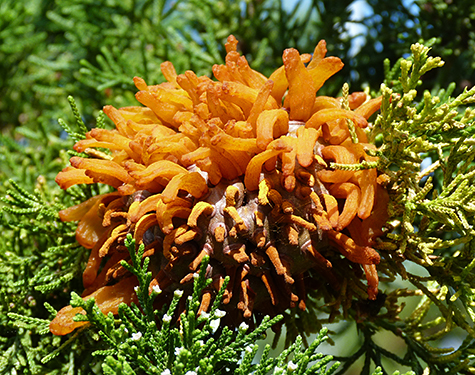
Everyone knows that squirrels like nuts.
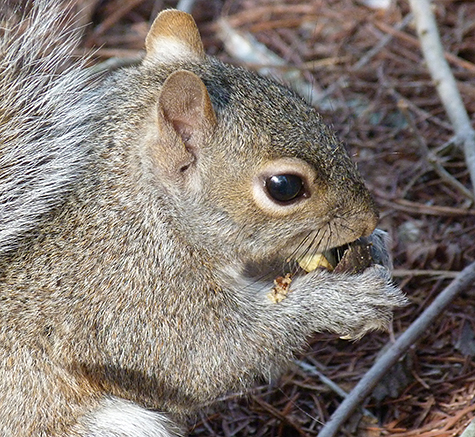
I’m not sure what nut the squirrel was eating, but it paid no attention to me standing just five feet away.
Snakes continue to be seen.
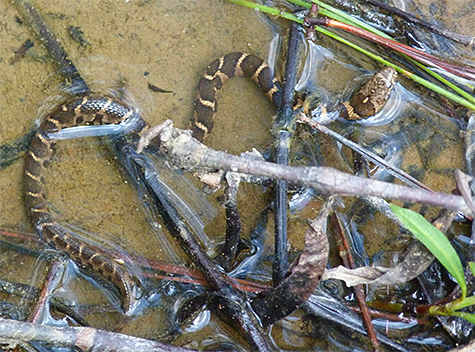
The larger adult water snakes have been mating over the past week. The youngster above was from last year’s pairings.
Wax myrtle readies itself for next winter and the arrival of yellow-rumped warblers. The warblers eat the fruit of the wax myrtle.
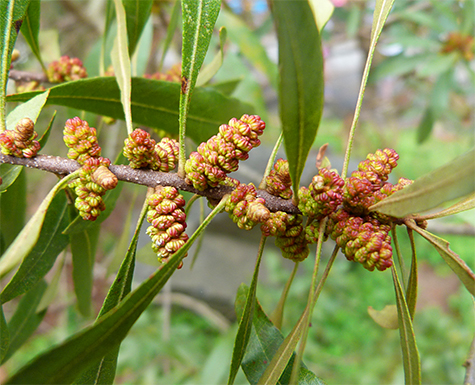
And finally, the first yellow-bellied slider hatchling of the year was spotted by Ranger Kristin on April 12 in Explore the Wild.
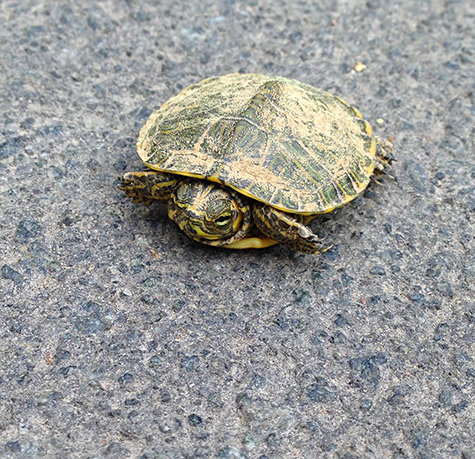
The little turtle was in the nest for at least seven months, probably more. Good luck, little turtle.
Wood thrush are singing in the woods, great-crested flycatchers call out from the trees, and warblers and vireos forage among the sprouting leaves, stuffing themselves with little green loopers (caterpillars/inch worms) in order to fuel up for the rest of their migratory journeys north.
This is an exciting time of the year!
Great shots of the darner and the hairstreak!
Thanks. The swamp darners don’t often perch where you can get close to them.